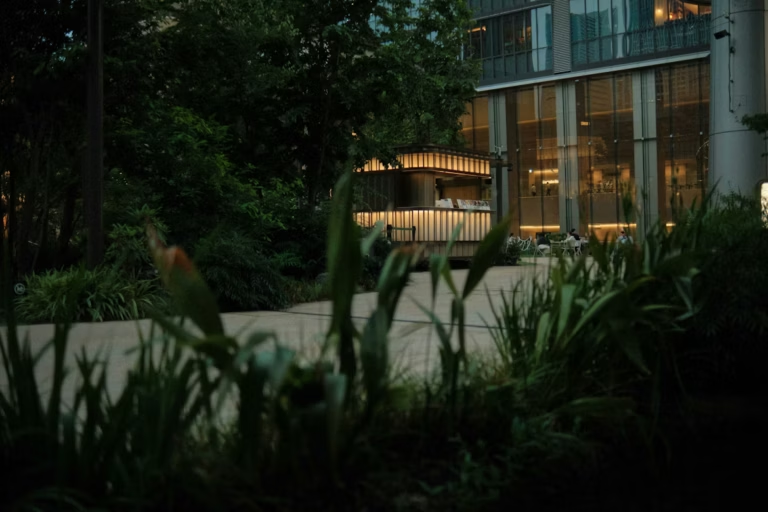Security risk reviews are becoming a critical part of how organisations in Western Australia manage safety, liability and operational resilience. Unlike a quick security audit or a product-focused quote from a security vendor, a security risk review is an independent, structured look at how well an organisation is protected — and where vulnerabilities exist. It’s practical, evidence-based, and aligned with the way local governments, insurers and executive teams expect risk to be managed.
In a state as diverse as WA — with environments ranging from metropolitan shopping centres and universities to remote mining operations and coastal council facilities — a one-size-fits-all approach simply doesn’t work. A security risk review adapts to the location, purpose and threat profile of the site, whether it’s a public-facing facility in Perth or a critical infrastructure site in the Pilbara.
What Is a Security Risk Review?
A security risk review examines how effectively an organisation is managing threats to people, property, information and operations. It considers the physical environment, human behaviour, security systems, and existing procedures. The goal is not to sell equipment, but to provide a clear understanding of current risks and what should be done to improve safety and resilience.
Many organisations request a review when:
- They’ve experienced theft, vandalism or aggressive behaviour
- They need to satisfy council, insurance or audit requirements
- They’re planning upgrades, redevelopment or expansion
- They want confirmation that existing systems and procedures are still effective
While it shares similarities with a full security risk assessment, a review can be more focused — it acts like a health check rather than a full redesign.
Why Security Risk Reviews Matter in Western Australia
Western Australia has unique risk environments. Shopping centres in Perth deal with anti-social behaviour, theft and after-hours trespassing. Local governments manage public spaces such as libraries, civic buildings, parks and community halls where public access makes full control difficult. Universities and schools face risks ranging from unauthorised access and student safety to laboratory protection. In regional and remote areas, mining and industrial sites deal with isolation, limited emergency response, and reliance on critical equipment.
Because of this complexity, more councils, developers and property owners are turning to independent security risk reviews to help make informed decisions. These reviews help answer the questions that insurance providers, regulators and executive teams increasingly ask:
Are risks clearly identified?
Are current controls effective?
What could happen if nothing changes?
How a Security Risk Review Differs from a Full Security Risk Assessment
The terms are often used interchangeably, but there are subtle differences:
A security risk assessment is typically broader and more formal, often required for development applications, new infrastructure, or high-risk projects. It follows the full ISO 31000 risk management process — context, risk identification, analysis, evaluation and treatment planning.
A security risk review, while still structured and aligned with ISO principles, is more practical and operational. It focuses on reviewing current systems, identifying gaps and providing realistic improvements. It’s often used for existing facilities rather than new developments.
In simple terms:
- A risk assessment is ideal for planning, design and council approval.
- A risk review is ideal for improving or checking what already exists.
When Organisations in WA Request a Security Risk Review
Across Western Australia, security risk reviews are commonly requested in situations such as:
- Before refurbishment or redevelopment of shopping centres, community facilities or office buildings.
- After a security incident such as a break-in, assault, theft or protest activity.
- To satisfy internal audits, ISO accreditation or insurance requirements.
- When applying for funding or grants for upgrades to CCTV, lighting or access control.
- Before renewing contracts with security companies or technology providers.
- As part of annual governance or compliance frameworks for councils, universities and corporate organisations.
How the Security Risk Review Process Works
A professional security risk review in Western Australia typically follows these stages:
Site familiarisation and context
Understanding the site, layout, operating hours, staffing, surrounding land uses, visitor behaviour and past incidents. In regional areas, this may also include response times for police, fire and medical services.
Review of existing security controls
This includes CCTV, access control, key systems, lighting, alarms, duress systems and monitoring arrangements. Policies and procedures — such as after-hours access, contractor check-ins or cash handling — are included too.
Identification of risks and vulnerabilities
Risks are documented clearly, whether they relate to poor visibility, unlocked access points, outdated technology or behavioural issues such as non-compliance with procedures.
Analysis and risk rating
Using ISO 31000 principles, risks are analysed based on likelihood and consequence. This helps prioritise which issues require immediate attention and which can be managed over time.
Recommendations and improvements
Practical recommendations are provided, ranging from low-cost procedural changes to long-term infrastructure upgrades. These may include CPTED improvements, lighting upgrades, policy amendments, training or technology enhancements.
Reporting and implementation guidance
A clear report is provided, written in plain language, with prioritised actions and optional implementation support or briefings to executives or council teams.
Common Findings Across Security Risk Reviews in WA
Security risk reviews often uncover similar issues across different types of sites in Western Australia:
- CCTV cameras placed for evidence, but not for live monitoring or prevention
- Poor lighting in car parks, laneways, plant rooms or loading docks
- Access-controlled doors being propped open or bypassed by staff and contractors
- Gaps in key management and master key tracking
- No formal process for reporting or analysing security incidents
- Outdated or unmanaged swipe card systems
- Blind spots where natural surveillance is blocked by fencing, signage or landscaping
- Security responsibilities unclear between facilities, contractors and centre management
Benefits of an Independent Security Risk Review
Engaging an independent consultant — rather than a company that installs equipment — ensures recommendations are objective, defensible and not influenced by product sales. Key benefits include:
- Vendor-neutral advice — decisions are based on risk, not sales targets
- Better use of existing infrastructure — many improvements don’t require major spending
- Improved compliance — supports council, insurance and audit requirements
- Stronger funding proposals — risk findings help justify budget allocations
- Clarity for decision-makers — executives and property owners get clear, prioritised actions instead of technical jargon
- Better preparedness for incidents — reviews often identify procedural gaps before they become serious issues
Final Thoughts
A security risk review is one of the most effective ways to understand vulnerabilities, improve safety and make informed decisions about security investments in Western Australia. It’s practical, evidence-based and adaptable to environments ranging from busy Perth shopping centres to remote regional operations.
For organisations that want to improve security without wasting money on unnecessary upgrades, a review provides clarity and direction — backed by recognised standards such as ISO 31000.
Want Support or a Proposal?
If you’d like to discuss a security risk review for your site or project in Western Australia, you can reach out through our Contact page. We provide independent, standards-based advice with no affiliation to security vendors or installers.



